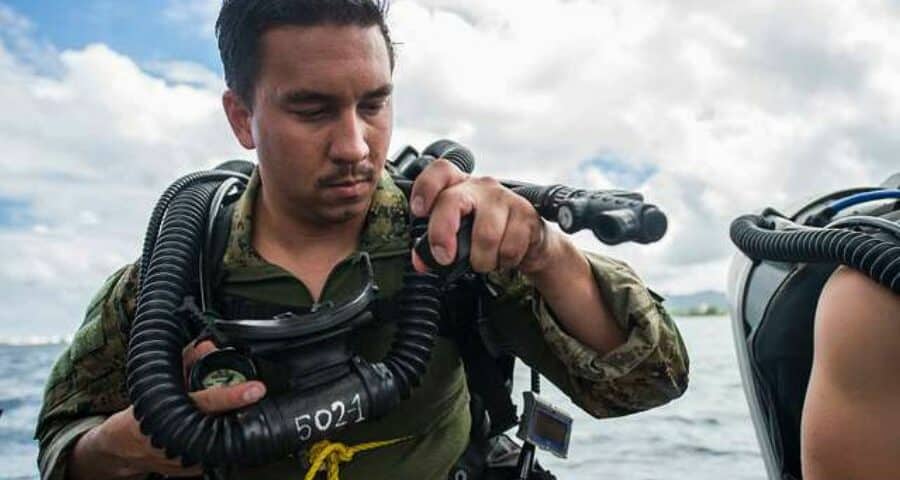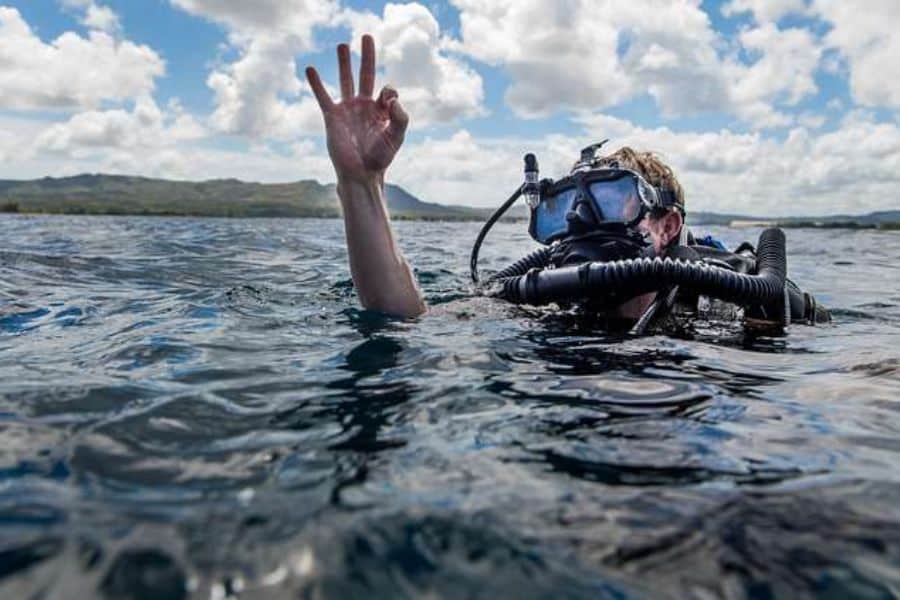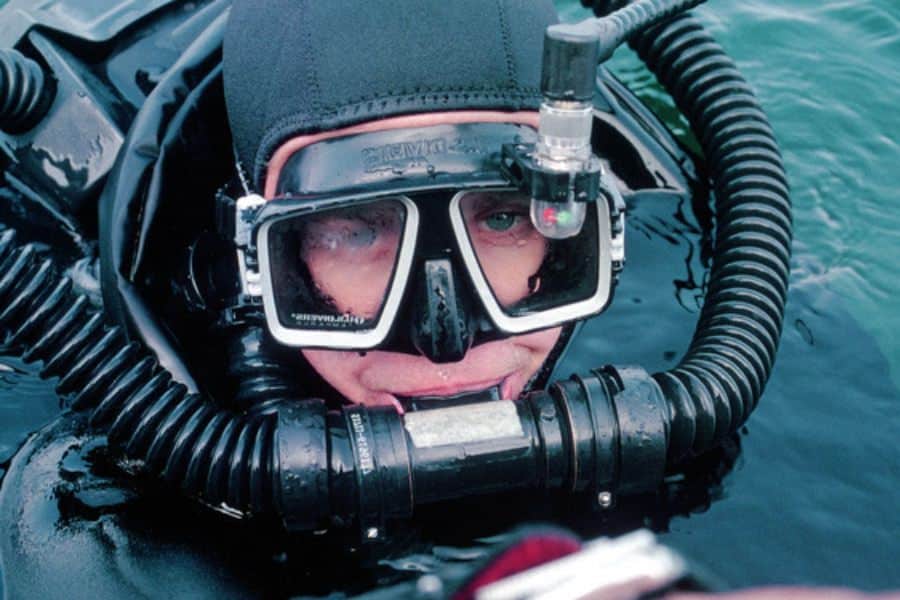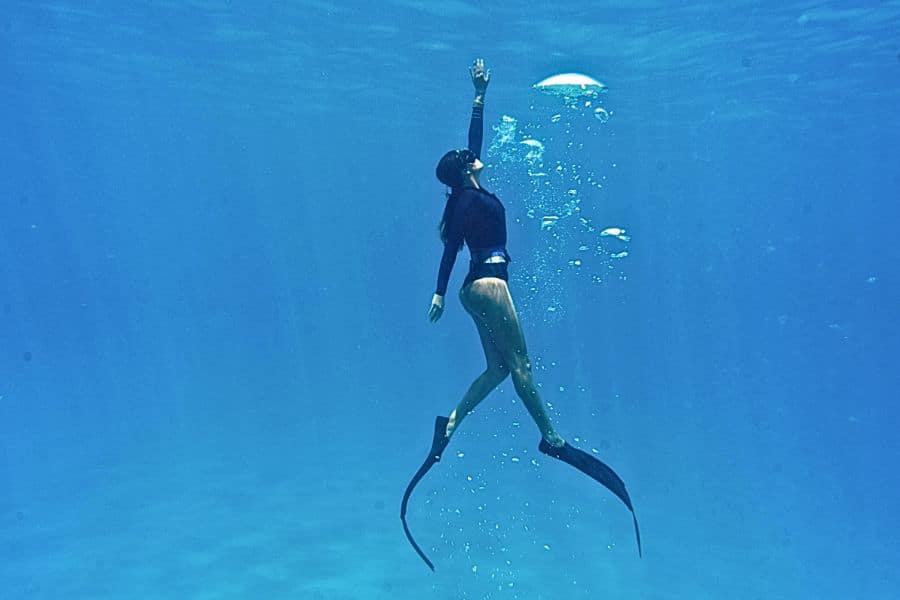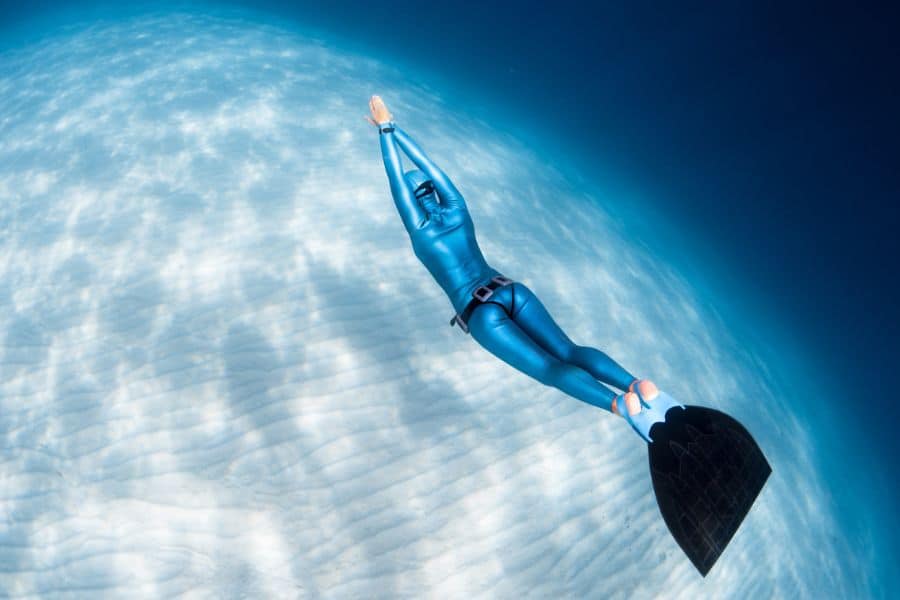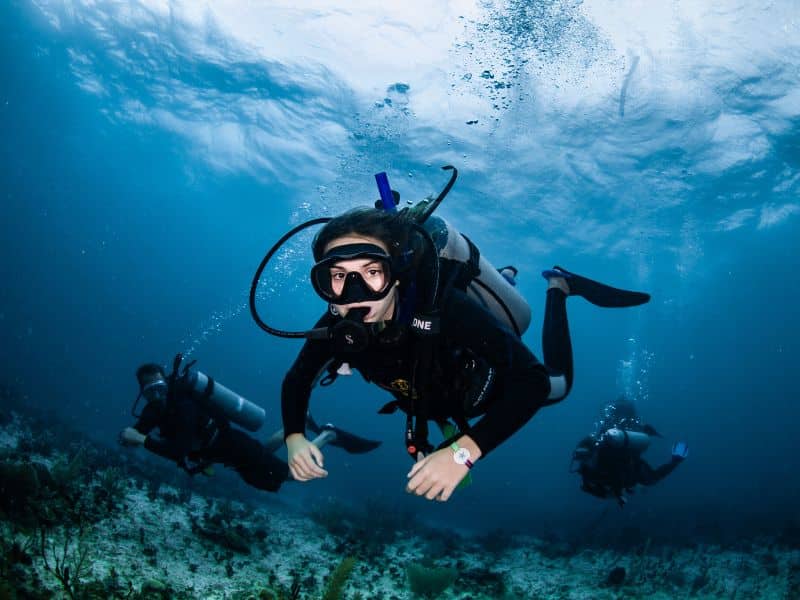3. Hypoxia in Technical Diving
3.1. How Hypoxia Occurs in Technical Diving
In technical diving, which involves deeper dives, hypoxia can occur due to the decrease in the partial pressure of oxygen in breathing mixes. As a diver descends, environmental pressure increases, affecting the gas ratios in the breathing mixture. If the mixture doesn’t contain enough oxygen for the depth reached, the body’s tissues won’t receive the necessary oxygen, leading to severe hypoxia.
For example, at extreme depths, mixtures like Trimix (oxygen, nitrogen, and helium) are used to reduce oxygen toxicity and nitrogen narcosis. However, these mixtures typically have a reduced oxygen content, increasing the risk of hypoxia if the gas proportions aren’t accurately calculated for the specific depth. This requires precise calculations and continuous monitoring to avoid dangerously low oxygen levels.
3.2. Is There a Risk of Hypoxia When Using Nitrox?
The risk of hypoxia when diving with Nitrox is virtually non-existent. Nitrox, a mixture of oxygen and nitrogen with a higher oxygen percentage than normal air, is used to extend bottom times and reduce nitrogen absorption. However, every Nitrox diver is trained to respect proper depth limits when using this mixture. This is because high partial pressures of oxygen can cause the opposite effect: hyperoxia.
3.3. Hypoxia in Closed-Circuit Rebreather (CCR) Divers
Closed-circuit rebreather (CCR) diving has become increasingly popular but carries significantly higher risks compared to open-circuit diving. According to the Divers Alert Network (DAN), hypoxia is one of the leading causes of injuries in CCR diving, especially since hypoxia symptoms develop gradually as the diver consumes oxygen in the breathing loop.
A closed-circuit rebreather (CCR) is diving equipment that recycles the exhaled air, removing carbon dioxide and adding oxygen as needed.
How Hypoxia Occurs in CCR Divers
Some common causes of hypoxia in CCR divers include:
- Oxygen Regulation Failure: CCRs function by adding oxygen to the breathing mix based on the diver’s needs. If the system doesn’t add enough oxygen, either due to a technical failure or incorrect setup, oxygen levels in the mix can drop to dangerously low levels, causing hypoxia.
- Monitoring Errors: CCRs require constant monitoring of the partial pressure of oxygen (PPO2) in the breathing mix. If the diver fails to properly monitor oxygen levels or respond to alarms, they could inhale a mix with insufficient oxygen, leading to hypoxia.
- Oxygen Sensor Failure: Oxygen sensors are critical for measuring the partial pressure of oxygen in rebreathers. If these sensors fail or aren’t calibrated properly before the dive, they can provide incorrect readings, increasing the risk of hypoxia.
- Human Error: Lack of experience or training in using CCRs can lead to errors in equipment setup or emergency response, raising the risk of hypoxia.
Study on Hypoxia in CCR Divers
A study by Daniel Popa from the University of California San Diego aimed to understand whether CCR divers develop hypoxia symptoms and whether they can perform self-rescue in such conditions. The study monitored neurocognitive functions, decision-making ability, and reaction times of divers who knew their rebreather would fail and those who didn’t.
95% of divers showed consistent hypoxia symptoms, but only 45% of divers in the blinded trial (unaware of the failure) took action to address the problem. Even when aware, only 85% were able to self-rescue.
Preventing Hypoxia in CCR Diving
- Equipment Maintenance: Regular maintenance of the CCR is essential to ensure that oxygen sensors and other components function correctly.
- Proper Training: Divers must undergo specialized training in using CCRs, including how to respond to hypoxia-related emergencies.
- Constant Monitoring: During the dive, divers must continuously monitor PPO2 and respond immediately to any deviation from safe levels.
- Sensor Calibration: Before each dive, oxygen sensors should be properly calibrated to ensure accurate readings.
This detailed information underscores the importance of understanding hypoxia in diving, especially in closed-circuit rebreathers (CCRs), and the need for proper equipment maintenance, training, and constant monitoring to ensure diver safety.




